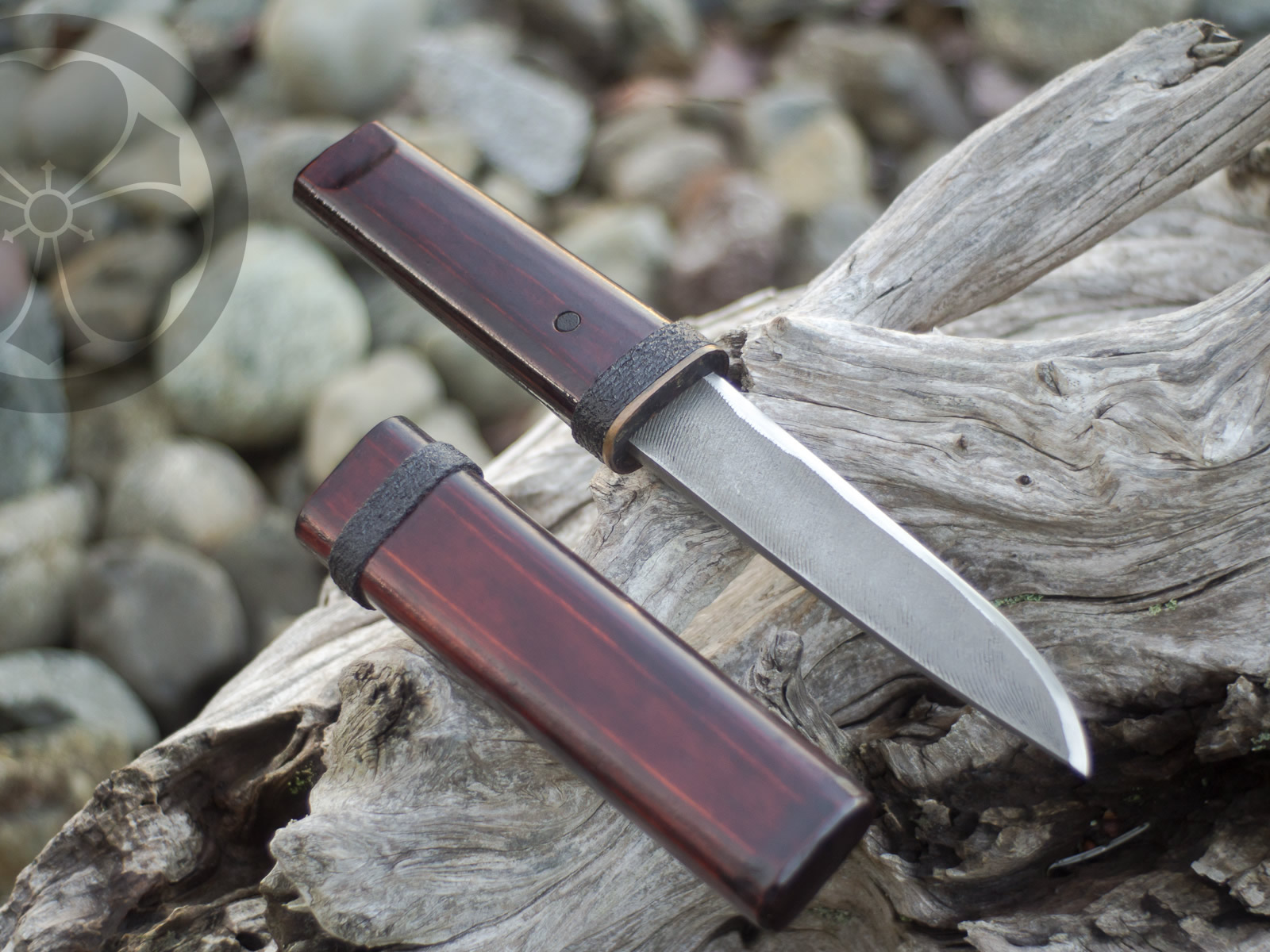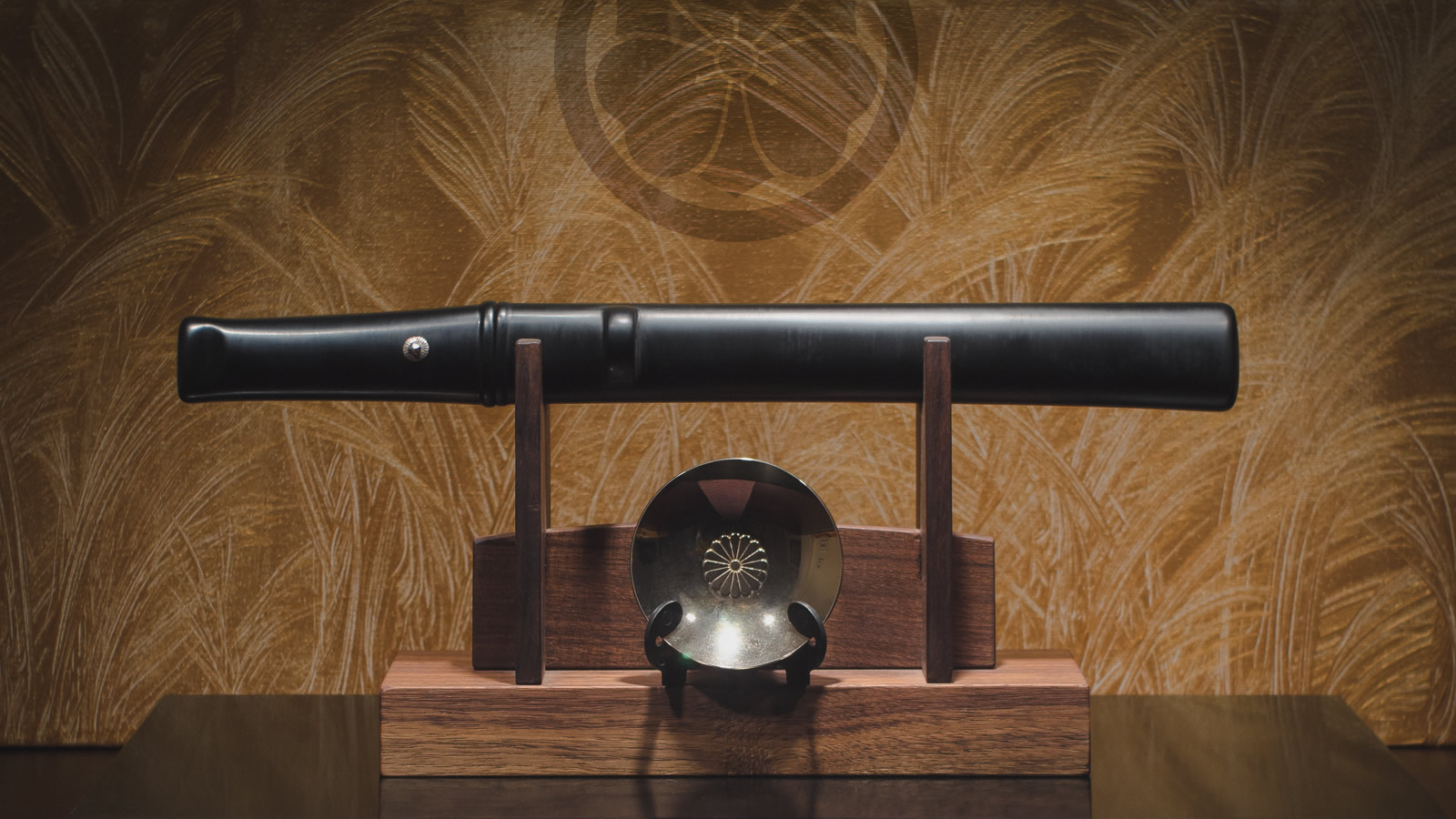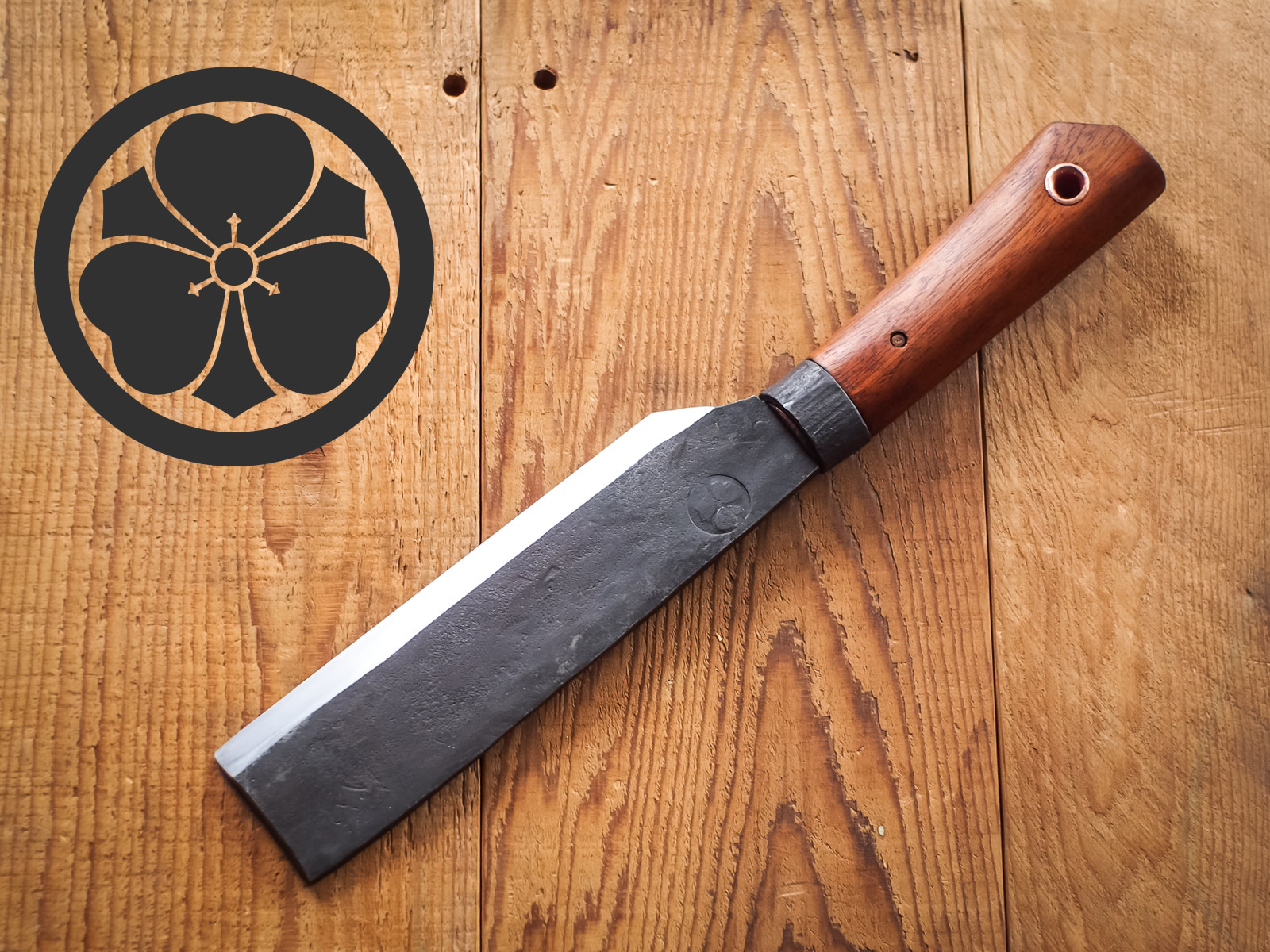-

Process: Making the Mountain Kotanto
The wider profile of the mountain style kotanto is inspired by a kamakura sword and has a more deeply curved tip (fukura-tsuku) and shorter drop point. The simple and humble mounting style is inspired by the age-old style of farming and foresting tools traditionally used in managing satoyama lands. Satoyama are the managed forest areas…
-

Forest Kotanto
A clay tempered blade hand forged in a charcoal fire, water quenched with clay, sharpened with waterstones, and finished simply and humbly in the age-old style of farming and foresting tools traditionally used in managing satoyama lands. Satoyama are the managed forest areas that border the cultivated fields and the mountain wilds in Japan. Historically…
-

Mountain Kotanto
A clay tempered blade hand forged in a charcoal fire, water quenched with clay, sharpened with waterstones, and finished simply and humbly in the age-old style of farming and foresting tools traditionally used in managing satoyama lands. Satoyama are the managed forest areas that border the cultivated fields and the mountain wilds in Japan. Historically…
-

Sounds of the Workshop: Tanto Overview
The tools are simple and few, but the work is long and hard. A collection of clips documenting the steps and sounds involved at many stages of the process of crafting charcoal forged classical tanto and mountings from reclaimed materials. Footage from several recent projects is included, some extended and some previously unreleased, some from…
-

Touzai Tanto
Touzai (東西) can be literally translated “East West” and carries the idea of spanning across distance or covering and including everywhere. There is also a saying, “kokontouzai” (古今東西) which means for all time and all places, literally “old, now, East, West”. This project began with the concept of ideas from different times and places coming…
-

Making Sekigane for a Wrought Iron Tsuba
Guards for classical Japanese style takedown knives are generally formed as variations of flat discs that slide over the tang. When working with wrought iron or steel, small copper inserts called sekigane (責金) are often used to prevent contact between the blade and the tsuba. This photo essay will attempt to portray a simple approach…
-

From the Garden to the Forest
A pair of outdoor knives forged from a single reclaimed hedge shear blade and finished simply and humbly in the age-old style of farming and foresting tools traditionally used in managing satoyama lands. Satoyama are the managed forest areas that border the cultivated fields and the mountain wilds in Japan. Historically they provided fertilizer, firewood,…
-

The Bone Knife
This project is part of the artifact series which tend to have the appearance of far older variations of my fusion style works and seem to come from an alternative history where cultures might have blended at different times and in different ways. This particular work is more of a departure from my usual designs,…
-

Making an Outdoor Knife
The Japanese swordsmithing tradition has been in place for generations and many of the design elements have been tested and refined for centuries. With careful study and practice, this can be a solid foundation for today’s bladesmiths and knifemakers to build their work upon. This article will provide an overview of the process and cover…
-

Making a Hatchet Handle
The second half of the antique hatchet restoration project. There are several important points that are often overlooked when choosing or crafting an axe or hatchet handle. Though not a thorough treatise on the subject, this post will briefly discuss some axe and hatchet handle design theory and recommended dimensions, and provide an overview of…
-

Making a Bamboo Water Scoop for Water Forging
Forging with a thin film of water on the anvil and hammer prevents forge scale or oxide from being hammered into the surface of the steel. The hot steel instantly vaporizes the water and the resulting steam explosion blows the scale off of the work, keeping it clean as it is worked. This type of…
-

Hatsu Yari
This project began as a personal challenge and an exploration of the beauty and symmetry that can be found in the sankaku style yari (三角槍). The cross section of the blade is triangular in this style, the spine quite thick and strong, and the tip is centered on both axis. The basic form is fairly…
-

Case Study: Making a Hon-Yaki Nata
Nata (屶, directly translated “mountain sword”, or 鉈) come in various sizes and shapes, but the type most familiar in the west does the duty of a light brush hatchet or heavy camp knife. Common characteristics include thick spines and heavy blades, often with single beveled edges similar to Japanese wood chisels. This type work…
-

Yozakura Tanto
The nightime viewing of cherry blossoms by moonlight is cherished for the unique perspective and focus it brings to the experience. The dark tones of the sky and the gentle light of the moon provide subtle variations in colour, texture, and detail that cannot be fully appreciated by day. This piece is reserved in its…
-

Kuromatsu Aikuchi Tanto
The Kuromatsu tanto with koshirae is named for a species of Black Pine (黒松) that grows near the seaside in Japan. The bark changes from grey to black as the tree matures and ages, symbolized by the colour and contrast of the smoother texture of the blade with the leathery texture of the darker scabbard.…
